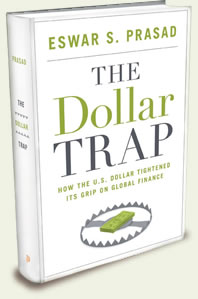Preface
But China and other countries are still frustrated that they have no place other than dollar assets to park most of their reserves. This frustration is heightened by the disconcerting prospect that, despite its strength as the dominant reserve currency, the dollar is likely to fall in value over the long term. China and other key emerging markets are expected to continue registering higher productivity growth than the U.S. Thus, once global financial markets settle down, the dollar is likely to return to the trend of gradual depreciation that it has experienced since the early 2000s.
In other words, foreign investors stand to get a smaller payout in terms of their domestic currencies when they eventually sell their dollar investments. This is a price foreign investors seem willing to pay to hold assets that are otherwise seen as safe and liquid. Financing continued fiscal profligacy in the U.S. stings.
Part Three: Inadequate Institutions
As national economies become more closely connected with one another, there is greater potential for both conflict and cooperation. Which of these two paths is taken has implications for the global configuration of reserve currencies. The third part of the book illustrates how existing frameworks for international economic cooperation have not worked well, leaving conflict rather than cooperation as the more typical state of affairs. This part of the book takes the reader on a behind-the-scenes tour of some of the intrigue in international financial diplomacy, using a variety of sources and even drawing on unconventional sources, such as Wikileaks cables.
Economic tensions among countries are being heightened by the proclivity of the U.S. and other advanced countries to use unconventional monetary policies aggressively—in effect, printing large amounts of money—to prop up their economies and financial systems. These measures have the side effect of depreciating their currencies. Currency depreciation is a zero sum game—if one currency depreciates, some other currency has to appreciate. Hence, actions taken by some major central banks have set off a spate of currency wars as other countries take steps to prevent their own currencies from appreciating. In Chapter 7, I examine the rhetoric and substance behind currency wars. Ironically, when countries resist currency appreciation through intervention in foreign exchange markets, which adds to their foreign exchange reserves, they end up reinforcing the dollar’s prominence as a reserve asset.

